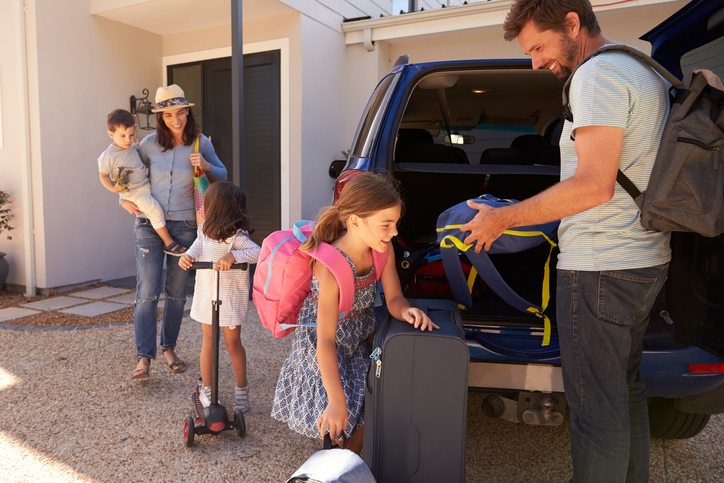Before you head out on your Summer road trip, take a look at these tips to prepare your vehicle that All Tech Automotive found on Mobil.

Car maintenance checklist for road trips
The summer road trip is as American as apple pie and Fourth of July fireworks, so don’t fail in your national duty to hit the road this year just because Old Nellie is overdue for some car maintenance.
Those who neglect to do a quick mechanical check-over – even of newer cars – before taking to the highway are begging to be stranded. We’re not talking about rebuilding the cylinder head or performing a line-bore on the crankshaft mains. Below are just a few reminders that may slip your mental checklist in the rush to get bags packed and kids fed.
Your family is counting on you to take a few preventative measures before you hurl them into the gauntlet of our national highway system.
Engine oil
Check your oil levels and the date you’re due for an oil change, preferably in your driveway before you embark on that first 29-hour leg. If you’re close to the manufacturer-recommended oil-change interval listed in your manual, then change it. Nellie deserves better than a crankcase full of gunky old oil as she hauls you up the Loveland Pass.
Transmission and differential fluids
Did you forget about the other oil reservoirs in your car? Both your transmission and drive axle have their own lubricant supply. Check your owner’s manual for their change intervals, as they are quite a bit longer than engine oil. A regular oil-change shop can handle the greasy job of changing manual transmission oil and the differential oil. While they are under the car, have them give the drive-shaft U-joints and any other grease points a squirt of grease.
Hoses
Rubber hoses would last 10 years if all they did were sitting on a shelf. In a car, they are regularly exposed to temperatures around the 212-degree boiling point. At high temps, the plasticizers that make rubber squishy leach out at a faster rate. Once a hose gets hard, it cracks and hot water spurts out. Look first at where both the input and output radiator hoses attach to the engine and to the radiator. The extra stress on the hose from the pipe collar and hose clamp means they typically crack and fail there first. Also check your heater hoses, which run from the engine (usually near the thermostat housing) into the firewall and back. Look for bulges or blisters, which indicate a weakness in the hose wall. If your hoses have cracks or blisters, replace them. It’s easier to do it now than in the 112-degree heat of Death Valley. As a precaution, buy a hose-patch kit at the local auto parts store.
Belts
Check the engine belts by turning them sideways with your hand so you can see the friction surface. If they’re at all ragged, torn, cracked or showing the fiber cords, it’s time for fresh ones. Newer cars often have one large belt, called a serpentine, which runs the water pump and all the accessories (A/C, power steering and alternator). If your car has less than 50,000 miles, it’s probably fine. Older cars have more than one belt to run these devices. Make sure they are all in good condition. If you hear loud screeches when you pull away from a stoplight, a loose belt is probably the cause. If they are loose – in other words, if your finger can depress the belt more than a half-inch of deflection at a point halfway between pulleys – the belt is stretched. If it’s old and worn, replace. If it’s not, you’ll have to retention it or it may fall off, usually at a really inopportune moment such as in the 2-mile backup at the turnpike toll booth.
Engine coolant
New vehicles come equipped with engine coolant designed to go 100,000 to 150,000 miles. If your car is less than four years old, check that the under-hood coolant reservoir – usually a clear plastic bottle that says “engine coolant” on the cap – is topped up.
Tire pressure and tread
Tires are your contact with the road, and since losing contact generally results in the remains of your vehicle being vacuumed up, check ’em out. Most people believe the appropriate tire pressure is listed on the tire itself. Actually, the number on the tire is the maximum amount of pressure the tire can hold and, if combined with extreme heat and speeds, could lead to a blowout. Be safe. Look on your driver’s side door, in the glove compartment, or on the fuel filler door for the recommended tire pressures, and check the pressure before you leave with a good gauge (available from your auto parts store) and an air hose (available at the corner gas station). Low tire pressures waste fuel and, more importantly, cause the tire to run hotter from the extra friction.
To view the full list, click here.